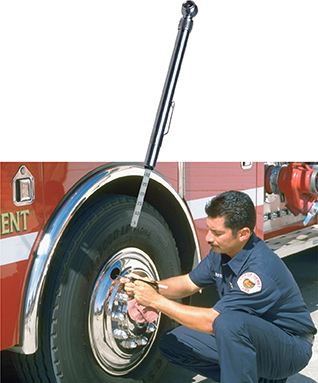An object does not need to be as large as a hockey puck to exert pressure when it collides with another object. Recall that the helium atoms in a balloon are constantly moving. The pressure produced by a single helium atom colliding with a wall is extremely small. However, there are more than 1022 helium atoms in a small balloon. When so many particles collide with the walls of a container at the same time, they produce a measurable pressure.
 Collisions between particles of a gas and the walls of the container cause the pressure in a closed container of gas. The more frequent the collisions, the greater the pressure of the gas is. The speed of the particles and their mass also affect the pressure.
Collisions between particles of a gas and the walls of the container cause the pressure in a closed container of gas. The more frequent the collisions, the greater the pressure of the gas is. The speed of the particles and their mass also affect the pressure.
Factors That Affect Gas Pressure
Think again about the collisions that produce gas pressure. What changes might affect the pressure of a gas in a container? The particles in the gas could move faster or slower. The gas could be moved into a larger or smaller container. You could add gas or remove gas from the container.  Factors that affect the pressure of an enclosed gas are its temperature, its volume, and the number of its particles.
Factors that affect the pressure of an enclosed gas are its temperature, its volume, and the number of its particles.
Temperature
Suppose you are about to go on a long drive. The driver suspects that the air pressure in the automobile tires might be low. You check the pressure in each tire, using a pressure gauge like the one in Figure 11. You find that the measurements are well within the automobile manufacturer's guidelines. If you checked the tire pressures again after a few hours on the highway, would you be surprised to find that the pressure in the tires had increased?
Figure 11 The firefighter is using a pressure gauge to check the air pressure in a tire on a firetruck. If the tires on the truck have a 44.5-inch diameter, the pressure on a front tire should be about 125 pounds per square inch (psi).

The constant motion of tires on the highway causes the tires and the air in the tires to warm up. As the temperature rises, the average kinetic energy of the particles in the air increases. With increased kinetic energy, the particles move faster and collide more often with the inner walls of the tires. The faster-moving particles also hit the walls with greater force. The increase in the number of collisions along with the increase in the force of the collisions causes an increase in the pressure of the air in the tires.  Raising the temperature of a gas will increase its pressure if the volume of the gas and the number of particles are constant.
Raising the temperature of a gas will increase its pressure if the volume of the gas and the number of particles are constant.





